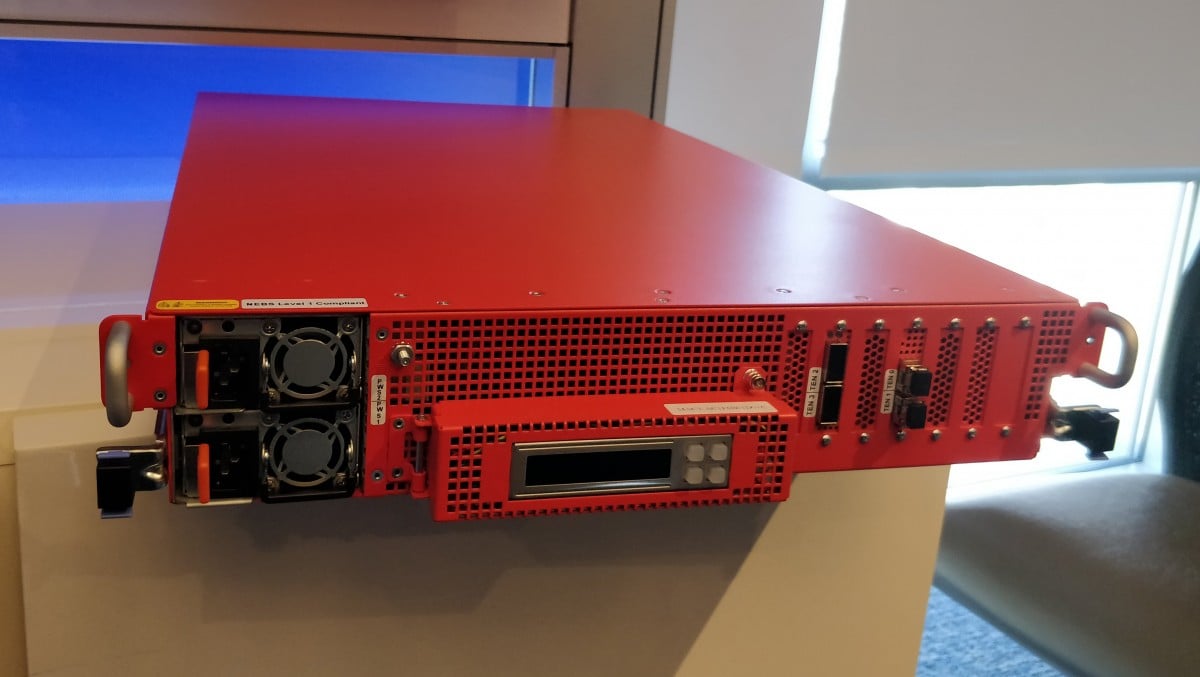How Does Netflix routes Data?
What is NETFLIX ? (Small Introduction)
Netflix is today’s most demanded and popular subscription based streaming service provider which offers wide variety of award-winning TV shows, movies, anime, documentaries and more – on thousands of internet-connected devices.
Netflix's content library includes a wide variety of genres and languages, and its original programming has become increasingly popular over the years, winning multiple awards and critical acclaim. The service is available in over 190 countries and has millions of subscribers worldwide. Users can access Netflix on various devices, including smartphones, tablets, smart TVs, and gaming consoles..
What makes NETFLIX Data routing So Special !
In order to understand what and how data routing works in NETFLIX infrastructure environment, Firstly we need to understand Data routing and then we can compare with NETFLIX routing.
Data routing is the technique of transfer the data packets within devices through a network, such as the Internet. The basic fundamental behind data routing is to send and receive data from one device to another by looking the most efficient path through the network.
When a device wants to send and receive data to another device on the network, it first breaks the data into small packets. Each packet having a portion of the data along with information about the source and destination addresses.
The packets are then sent into the network, where they are routed from one device to the next based on the destination address in each packet. Each device on the network, such as routers and switches, reads the destination address and forwards the packet to the next device along the path towards the final destination. So once all packets are arrived to the destination device then it will reassemble all packet in big original data packet and deliver to the user device.

As Illustrated in above image, If User sitting in USA and he wants to watch any content which is based on UK Company Server then Data will be flow through multiple ISP (Internet Service Provider) Country and then it will reach to the final destination. So in this kind of data routing we can see that how many multiple countries and devices need to pass data to reach the final destination therefore its increase data travel time and decrease quality as well because not all middle countries devices are same brand.
In the case of NETFLIX Data routing, its method is very unique and faster , more reliable more secure.
Netflix has their own Device called Open Connect Appliance (OCA), this device contain all the data content and memory cache for data routing with all ISP’s.So Netflix Data doesn’t need to pass through multiple countries to reach the destination, It works mostly a locally available content and definitely if its local then data reliability, scalability, security all aspects benefits from this kind of data routing techniques as shown in below image.

Interesting! Right? , So lets jump in to the Detailed Netflix Data Routing Infrastructure and see how it works.
Netflix Routing Infrastructure:-
Netflix has a sophisticated routing infrastructure that helps to ensure fast and efficient delivery of its content to users around the world. Here are some of the key elements of Netflix's routing infrastructure:
- Content Delivery Network (CDN)-Open Connect
Netflix uses a global network of CDNs to distribute its content to users. These CDNs are made up of multiple servers located in strategic locations around the world. When a user requests a video, the CDN will deliver the content from the server that is closest to the user, reducing latency and improving playback performance.
Netflix has developed its own CDN, called Open Connect, which consists of custom-built video delivery systems that are optimized for streaming video. Open Connect allows Netflix to deliver its content faster and more efficiently than traditional CDNs.
The primary goal of Open Connect is to deliver Netflix's content as efficiently and quickly as possible, while also reducing the cost of content delivery. Open Connect achieves this by:
- Storing Netflix's content locally: Open Connect caches Netflix's content
on specialized servers that are located as close to users as possible. This
reduces the amount of data that needs to be transmitted over the
internet, which can improve streaming performance and reduce
bandwidth costs.
When Netflix acquires new content, it is uploaded to the Open Connect
network. This content is stored on specialized servers, known as Open
Connect Appliances (OCAs), which are located in data centers around
the world.
When a user requests content from Netflix, their request is routed to the
Open Connect network. The request is analyzed to determine the user's
location, internet speed, and other factors.
Open Connect uses a process called Border Gateway Protocol (BGP)
Anycast to select the OCA that is closest to the user's location.
Netflix global network of thousands of OCAs are deployed in two ways:
- They install OCAs within internet exchange points (referred to as IXs or
IXPs) in significant Netflix markets throughout the world. These OCAs
are interconnected with mutually-present ISPs via settlement-free
public or private peering (SFI). Peering alone can be very beneficial to
their ISP partners.

-
Netflix provide OCAs free of charge to qualifying ISPs. These OCAs, with the
same capabilities as the OCAs that are in the IXPs, are deployed directly
inside ISP networks. They provide the server hardware and the ISPs provide
power, space, and connectivity. ISPs directly control which of their
customers are routed to their embedded OCAs. ISP partners with
embedded OCAs also use peering for resiliency and to enable efficient
nightly fill and updates.

CISCO IOS XR BGP EXAMPLE CONFIGURATION router bgpneighbor remote-as 40027 address-family ipv4 unicast route-policy NETFLIX-OUT out route-policy NETFLIX-OUT if destination in NETFLIX-LOCAL then set med 0 elseif destination in NETFLIX-BACKUP then set med 100 else drop endif end-policy - They install OCAs within internet exchange points (referred to as IXs or
IXPs) in significant Netflix markets throughout the world. These OCAs
are interconnected with mutually-present ISPs via settlement-free
public or private peering (SFI). Peering alone can be very beneficial to
their ISP partners.
- Storing Netflix's content locally: Open Connect caches Netflix's content
on specialized servers that are located as close to users as possible. This
reduces the amount of data that needs to be transmitted over the
internet, which can improve streaming performance and reduce
bandwidth costs.
When Netflix acquires new content, it is uploaded to the Open Connect
network. This content is stored on specialized servers, known as Open
Connect Appliances (OCAs), which are located in data centers around
the world.
When a user requests content from Netflix, their request is routed to the
Open Connect network. The request is analyzed to determine the user's
location, internet speed, and other factors.
Open Connect uses a process called Border Gateway Protocol (BGP)
Anycast to select the OCA that is closest to the user's location.
- Routing Algorithm
The routing algorithm used by Open Connect is a combination of several techniques, including geo-routing, anycast routing, and network-aware routing. Geo-routing is the process of routing traffic based on the geographic location of the viewer, which helps to reduce latency and improve the viewing experience. Anycast routing allows multiple servers to share the same IP address, so that requests can be automatically routed to the nearest available server. This helps to improve performance and reduce congestion on the network. Finally, network-aware routing takes into account the current state of the network, including factors such as traffic load, server availability, and network topology, in order to optimize the routing of traffic.
- Protocols
One of the key routing protocols used by Open Connect is Border Gateway Protocol (BGP), which is a standard protocol used to exchange routing information between different networks on the Internet. BGP helps to ensure that traffic is routed along the most efficient path possible, based on network conditions and the availability of different routes.
Open Connect also uses several other routing protocols to optimize traffic routing and reduce latency. These include:
Intermediate System to Intermediate System (IS-IS) - a link-state routing protocol used to create a hierarchical network topology that helps to optimize routing and reduce congestion.
Label Distribution Protocol (LDP) - used to distribute labels that identify the paths that traffic should take through the network, which helps to improve the efficiency and reliability of routing.
Multiprotocol Label Switching (MPLS) - a protocol that uses labels to route traffic along predefined paths through the network, which helps to improve the efficiency and reliability of routing.
- Analytics and Monitoring
Netflix heavily relies on analytics and monitoring to ensure the smooth operation of its streaming video platform and to continually improve the user experience. Here are some of the analytics and monitoring tools and practices that Netflix uses:
- Chaos Engineering: Netflix conducts Chaos Engineering, a practice that involves deliberately introducing failures into the system to identify weaknesses and improve the resiliency of the platform.
- Real-Time Dashboards: Netflix uses real-time dashboards to monitor the performance of the platform in real-time. These dashboards display metrics such as traffic volume, playback performance, and system availability.
- Automated Alerts: Netflix uses automated alerts to notify its operations teams of any anomalies or issues with the platform. These alerts are based on predefined thresholds for metrics such as system response time, error rates, and user activity.
- A/B Testing: Netflix uses A/B testing extensively to optimize the user experience. This involves testing different variations of the platform and measuring user engagement and retention to identify the most effective features and design.
- Machine Learning: Netflix also uses machine learning algorithms to analyze user behavior and preferences to make personalized recommendations and improve the overall user experience.
- Performance Analysis: Netflix conducts extensive performance analysis to optimize the delivery of streaming video content. This involves analyzing network performance, server load, and other factors that can affect video playback performance.
In Conclusion!
Netflix's routing infrastructure is designed to deliver a fast, reliable, and personalized streaming experience to users around the world. The company invests heavily in its infrastructure to ensure that it can scale quickly and provide high-quality services to millions of users.




